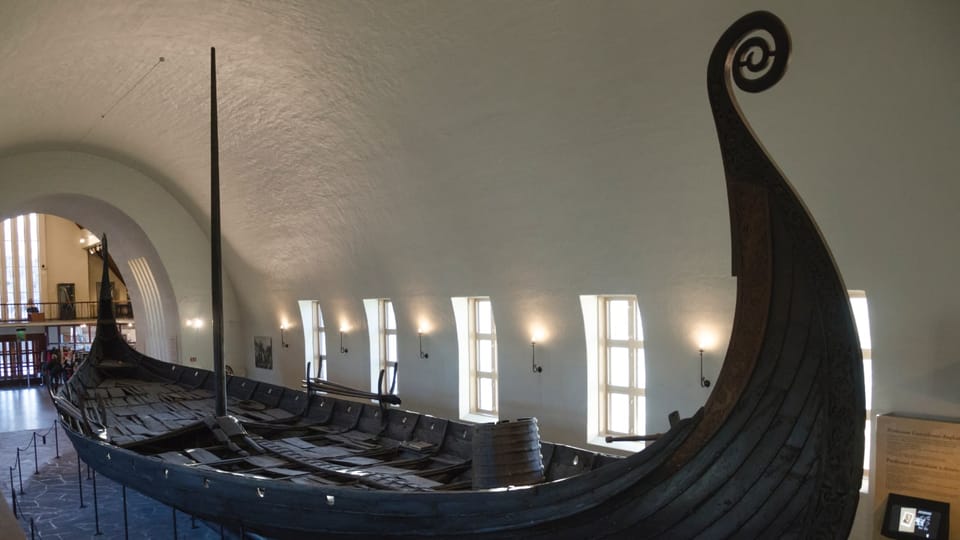Viking Visions: Artistry, Power, and Pioneering Spirits Across Medieval Europe

The Viking Age: not just a couple of centuries tucked away in the late 8th to the early 11th, but a full-blown saga sprawling across Europe with Norse adventurers at the helm, cutting through history like a finely honed blade. These cats weren’t just the fierce raiders and warriors of legend; they were master craftsmen, savvy traders, and bold explorers who left a cultural and artistic stamp that’s still turning heads today.
Now, let’s zoom in on 1904, Tønsberg, Norway. They dig up the Oseberg Ship, a burial ship from 834 AD packed with some serious high-status swag—wooden carvings, textiles, the whole nine yards. This wasn’t just any old ship; it was a VIP send-off for two high-ranking women, smashing any old notions about Viking society being just a boys’ club.
Flash forward to 1943, another mind-blower hits the scene—the Gjermundbu Helmet, dug up in Norway. This bad boy is the real McCoy, a genuine Viking helmet, no horns in sight, setting the record straight on what these Norsemen really wore into battle.
Cut to Denmark, 1996, during a dig at the Roskilde Ship Museum. They unearth the Roskilde 6, this monstrous ship that screams Viking ingenuity and muscle, built for some serious ocean-crossing and raiding parties.
Over in Scotland, 1831, the Lewis Chessmen come to light—kings, queens, knights carved from walrus ivory and whale teeth. These aren’t just game pieces; they’re a peek into the high-life and hobbies of the Viking elite.
Then there’s the Hoxne Hoard, unearthed in Norway in 1834—over 2.5 kilograms of gold that scream wealth and extensive trading networks, flashing the kind of bling that would make even modern tycoons pause.
Don’t forget the Rök Runestone in Sweden, an epic tale carved in stone that’s still got scholars scratching their heads over its runes, packed with heroics, historical shout-outs, and maybe even a little magic.
Mjölnir pendants? Everywhere from Scandinavia to England, these Thor’s hammer amulets weren’t just decorative; they were spiritual powerhouses protecting wearers and flexing some major religious muscle.
And those Jelling stones in Denmark? Picture this: towering stones pushing the narrative from old-school paganism to VIP Christianity, all under the patronage of the big-shot Danish kings.
Up in Sweden, the Valsgärde helmets—blinged-out headgear sporting animal motifs and serious metalwork, narrating tales of a warrior class that wasn’t just about brute force but style and substance.
Even the small finds like a tiny silver crucifix in Birka around the mid-9th century whisper tales of early Christian vibes in bustling trade hubs, stirring up the cultural cocktail that was Viking-era Scandinavia.
And then there’s the loot—like the Cuerdale Hoard, a silver stash in England so massive it must have been a Viking war chest or rainy day fund, giving us the skinny on how these Norsemen managed their assets and planned their conquests.
Dive deeper with the Tjängvide Image Stone and other Gotland Picture Stones—these aren’t just rocks; they’re canvases, illustrating Viking sagas of gods, heroes, and the daily grind.
The Borre-style art and the Franks Casket? These pieces mix it up with a mash-up of Norse and other European styles, showing off a cultural melting pot that was stirred up through centuries of Viking travels and tales.
Finally, the Tune Ship, another gem from Norway’s shipbuilding heritage, not as famous as Oseberg but just as telling about the maritime mastery of these legendary Norsemen.
Through each artifact, from ships to chess pieces, we’re not just digging up relics; we’re resurrecting a world where Vikings ruled not just by sword, but by art, culture, and a knack for leaving a mark on history that’s as deep as it is indelible. So, next time you think of Vikings, forget the stereotypes and remember the artisans, the strategists, the pioneers—the real movers and shakers of the medieval world.
